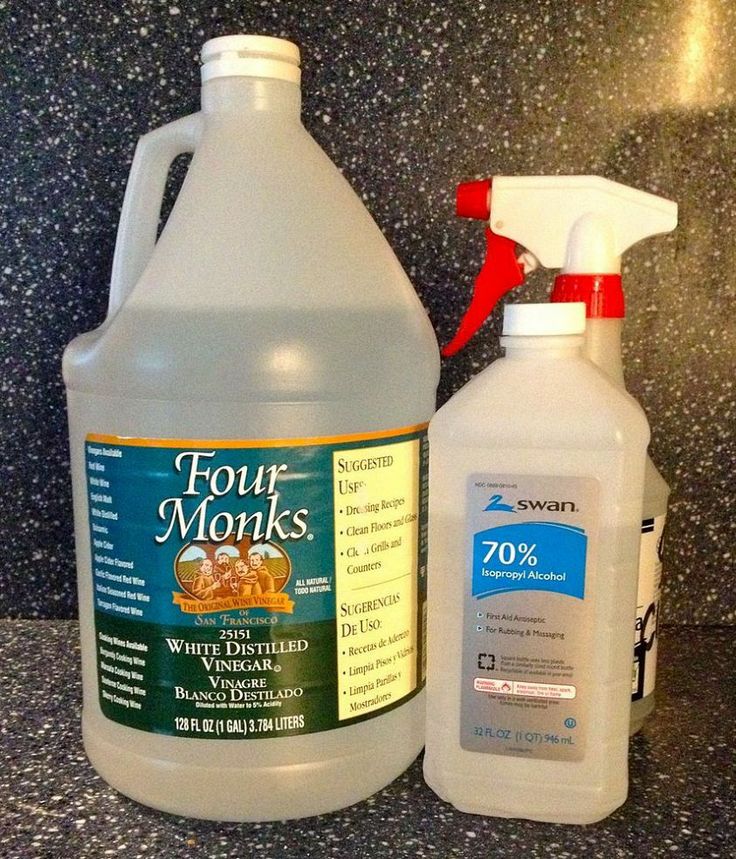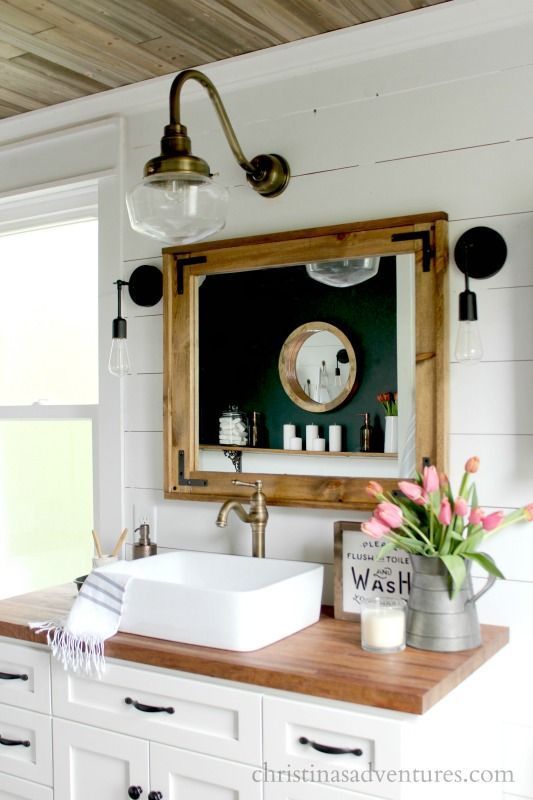Dilute vinegar for cleaning
How to Use Vinegar to Clean Your Home
Homeowners may be surprised to learn that one of the most effective cleaning agents is something that they keep in the kitchen. Vinegar offers a number of benefits for people looking to keep a clean, fresh-smelling space that is safe for children and pets. It also avoids the harsh fumes of many other cleaning products. Knowing how to clean with vinegar can give homeowners the information they need to take advantage of this natural and minimally-costly traditional cleaning option. This guide identifies which vinegar to use, a few considerations in creating a cleaning solution, and the best way to clean a variety of surfaces.
Table of Contents
- Why Vinegar Is a Great Cleaner
- Which Vinegar to Use
- How to Make an All-Purpose Vinegar Cleaning Solution
- Vinegar/Water Ratios
- Mixing Vinegar and Baking Soda
- What Not to Clean With Vinegar
- Using Vinegar Around the House
- Countertops
- Flooring
- Cabinetry
- Showers and Bathtubs
- Toilets
- Walls and Doors
- Windows
- Upholstery
- Large Appliances
- Small Appliances
- Cooking Tools/Utensils
- Clothing
Why Vinegar Is a Great Cleaner
People might stock their homes or apartments with a variety of cleaning products designed for individual surfaces. This is certainly a viable approach, but vinegar may one of the best and most inexpensive. In studies, white vinegar has demonstrated that it can:
- cut through grease
- dissolve limescale on fixtures, sinks and toilets
- eliminate most instances of bacteria and viruses
These benefits alone would make it a fairly viable cleaning option. It is also harmless when used appropriately. This means that someone who might balk at cleaning with bleach or ammonia in an unventilated space, due to the risk of inhalation, would not have the same problems with vinegar.
Which Vinegar to Use
There is a huge variety of vinegar options, and they are not all made equal. As a general rule, people use white vinegar for cleaning. It is an inexpensive kitchen item with many uses, culinary and otherwise. Colored vinegars, like those made from apple cider or wine, may tint the surface people want to clean.
Some vinegar products are not meant for consumption, but have cleaning applications.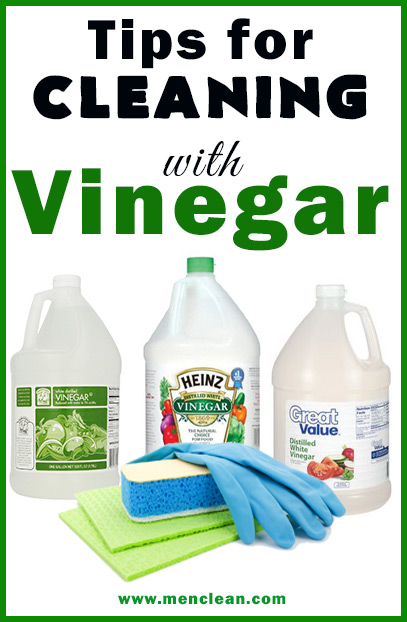 For example, cleaning vinegar contains about 6 percent acetic acid, compared to 5 percent for white vinegar. This increase in acidity can improve its cleaning power. More is not always better, however. Industrial vinegar has about 20-30 percent acetic acid and may not be appropriate for cleaning in the home.
For example, cleaning vinegar contains about 6 percent acetic acid, compared to 5 percent for white vinegar. This increase in acidity can improve its cleaning power. More is not always better, however. Industrial vinegar has about 20-30 percent acetic acid and may not be appropriate for cleaning in the home.
How to Make an All-Purpose Vinegar Cleaning Solution
Making an all-purpose vinegar cleaning solution is fairly easy for most people to do with items they have around the house. Experts rely on distilled white vinegar most of the time because it is:
- inexpensive, costing a few dollars per gallon
- effective and safe for cleaning most surfaces
- a popular staple in almost any kitchen
The most common vinegar cleaning solution contains one cup of vinegar mixed with one cup of warm water. Warm water helps to dissolve grease and hard water spots more quickly. People who are filling a spray bottle that they will use over time may want to mix the vinegar with distilled water, not tap water.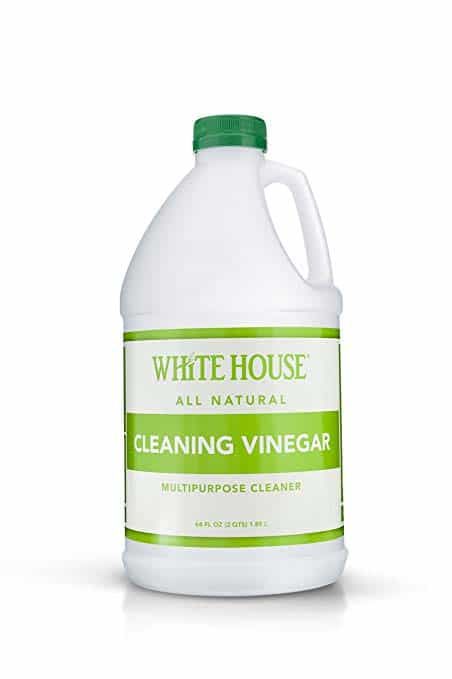 Since vinegar has a fairly strong odor, some recipes add essential oils to produce a different scent. Homeowners should research the product before using it. Certain extra ingredients may not be safe for surfaces, or could alter the vinegar’s cleaning efficacy.
Since vinegar has a fairly strong odor, some recipes add essential oils to produce a different scent. Homeowners should research the product before using it. Certain extra ingredients may not be safe for surfaces, or could alter the vinegar’s cleaning efficacy.
The high acid content and the distilled nature of white vinegar gives it a long shelf-life. This means that people can often mix a solution that they will use periodically throughout several days or even weeks without worry that it will go bad. People should keep in mind that if they add anything fresh to the cleaning solution to change its scent, like lemon juice, it may not stay safe for use longer than a day or two.
Vinegar/Water Ratios
Most vinegar cleaning solutions use a specific ratio of vinegar to another substance, usually water. The correct ratio depends on the surface and the type of cleaning needed. As a general rule, most natural cleaning experts suggest mixing one part vinegar to one part water. These recommendations typically rely on distilled white vinegar as the cleaning element. If homeowners are using cleaning vinegar, they may want to add a little more water to achieve a similar amount of acetic acid.
These recommendations typically rely on distilled white vinegar as the cleaning element. If homeowners are using cleaning vinegar, they may want to add a little more water to achieve a similar amount of acetic acid.
Mixing Vinegar and Baking Soda
Many recipes for natural cleaning solutions call for mixing vinegar and baking soda in warm or boiling water before using to clean. Most of the time, people may find this unnecessary. On its own, vinegar’s acidic nature makes it capable of cutting through oils, soap buildup, or even bacteria or viruses. When mixed with baking soda, which is highly alkaline, the acid is largely neutralized.
Baking soda can be a useful cleaning agent with vinegar, but its efficacy is limited. Mixing vinegar with baking soda into a paste may make it easier to clean a vertical surface, like a shower wall. However, baking soda is a solid that will dry hard if not cleared away. This means that the baking soda can eventually dry out and clog spray bottles.
What Not to Clean With Vinegar
Although people like to tout the natural and safe use of vinegar for cleaning, it is not ideal for every surface. Homeowners should avoid using vinegar for the following:
- stone surfaces, like a granite countertop or slate tile floor
- solid wood furniture
- hardwood flooring, unless they have confirmed that it will not damage the finish
- electronics, like computers or smartphones
- egg spills, because the acid causes the eggs to coagulate and become difficult to remove
These recommendations should lead homeowners to approach any cleaning surface with care. Typically, people may want to test a small amount of the vinegar cleaning solution in a spot that is less visible and let it sit for a few hours. If it does not stain, discolor, or otherwise damage the surface, it is likely safe for use.
Using Vinegar Around the House
Using vinegar to clean the house is a fairly simple prospect.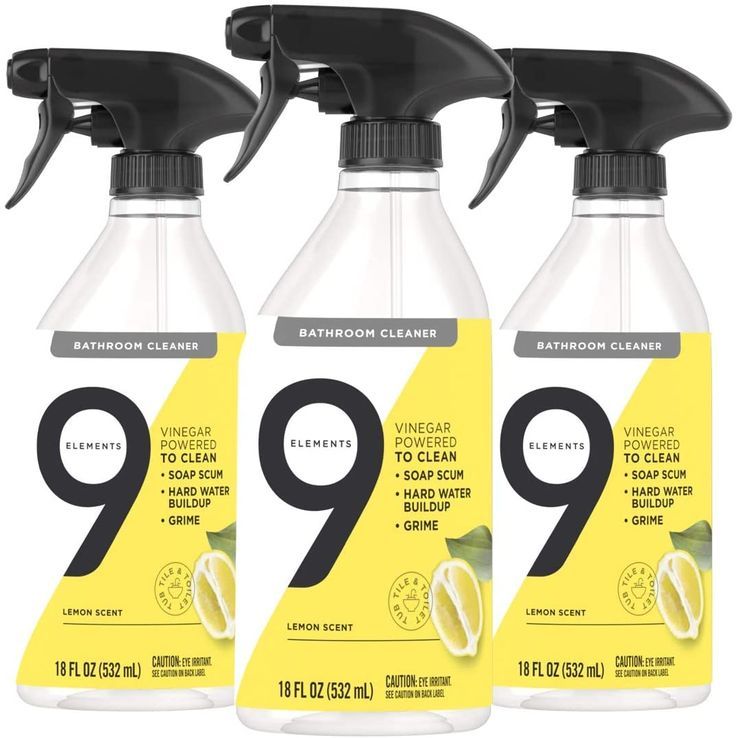 It rarely needs time to activate, so people can usually just mix the cleaning solution and start applying to the right surface. The best tools for cleaning depend on the surface or item that people want to clean. Homeowners who plan to use vinegar to clean the majority of the home may want to have the following tools handy for use:
It rarely needs time to activate, so people can usually just mix the cleaning solution and start applying to the right surface. The best tools for cleaning depend on the surface or item that people want to clean. Homeowners who plan to use vinegar to clean the majority of the home may want to have the following tools handy for use:
- microfiber cloth
- washcloth or small towel
- 1-gallon bucket with handle
- small mixing bowl
- cleaning gloves
- spray bottle
- squeeze bottle
- grout brush
- toilet brush
If people have a new surface to clean or have never used vinegar for cleaning, they should do a little more research to confirm the best approaches. Most of the time they can use the 1:1 ratio. There are times when they should do something else to make the cleaning quicker, more effective, or less damaging.
Countertops
Cleaning non-stone countertops is quite easy with vinegar. Homeowners should start by putting the vinegar solution into a spray bottle or small mixing bowl.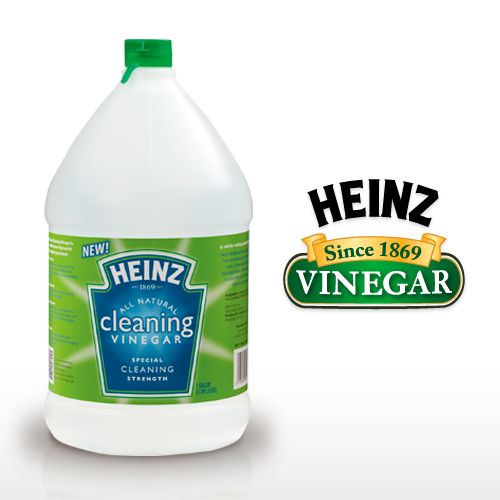 They can wipe away food debris or heavy liquid spills to make cleaning simpler. Once the surface is essentially ready, they should spray a fine mist over the countertop, or soak a small amount into a washcloth for wiping. It is not necessary to make the countertop dripping wet for effective cleaning. The surface should be wiped until it is clean and dry.
They can wipe away food debris or heavy liquid spills to make cleaning simpler. Once the surface is essentially ready, they should spray a fine mist over the countertop, or soak a small amount into a washcloth for wiping. It is not necessary to make the countertop dripping wet for effective cleaning. The surface should be wiped until it is clean and dry.
Flooring
Most flooring types will work with vinegar, although homeowners should always confirm that it is safe for theirs. Cleaning vinyl or linoleum can be done with a spray bottle and washcloth or a mop and bucket. To clean ceramic or porcelain tile, homeowners should mix a cup of vinegar into a gallon of water. Soaking the tiles can make it very slippery, since they are not absorbent. As such, people may want to work on a small number of tiles at a time. An old towel to wipe dry will cut down on the odor and make the surface safer for walking. Recommendations for hardwood flooring usually call for a few tablespoons of vinegar in a half-gallon of water, lightly sprayed on the wood and wiped immediately.
Cabinetry
Cleaning cabinets with vinegar relies on the same 1:1 ratio for most cleaning surfaces. Homeowners can lightly spray on the solution, give it a few minutes, then wipe dry. This approach may not be appropriate for people who have solid wood cabinets, since it could damage the finish. Otherwise, homeowners should keep in mind that vinegar is not as effective at cleaning some types of surfaces, cabinets included. If the cabinetry is extremely grimy, it may take a drop of liquid dish soap in the solution for greater efficacy.
Showers and Bathtubs
People who have showers or bathtubs made out of plastic or porcelain, not stone, may use vinegar to clean it. It is simple for homeowners to leave a spray bottle in the shower that they can mist on the surface after taking a shower, wipe, and let dry for daily cleaning and disinfecting. Vinegar also works well for fixtures. Soaking a rag in pure white vinegar to wrap around the faucet or showerhead for a few minutes will help cut through limescale more quickly than spraying. For layers of hard water buildup, people may want to temporarily remove the fixture and soak it in vinegar for up to an hour. This will make it easier to scrub or get rid of clogs before replacing it.
For layers of hard water buildup, people may want to temporarily remove the fixture and soak it in vinegar for up to an hour. This will make it easier to scrub or get rid of clogs before replacing it.
Toilets
Acetic acid’s ability to eliminate hard water stains is a major benefit for the toilet. Few people want to spend their time scraping away the accumulation, and vinegar can help. Homeowners should start by pouring in a cup of white vinegar and using a toilet brush to spread it over the affected surface. If this is not enough to loosen up the stain for scrubbing, they may add a cup of baking soda to activate foaming. Hard water can build up in layers. This means that people with a lot of staining may need to perform this task several times over a few days before the bowl is completely clean.
Walls and Doors
Vinegar in water can even be used to clean painted walls and doors, as long as homeowners take care. Flat paint calls for careful wiping, to avoid removing the finish.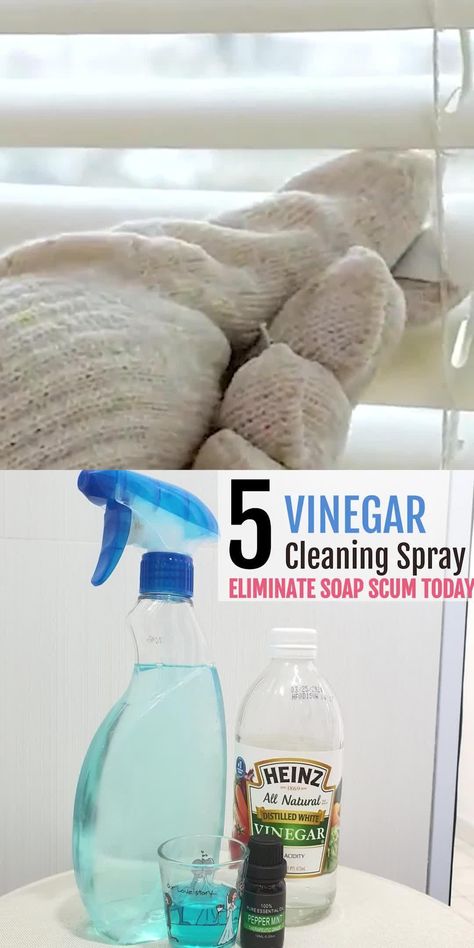 Cleaning with vinegar and water is easier with a semi-gloss or glossy finish. People should put 2-3 tablespoons of vinegar in a gallon of water, mix, and pour it into a spray bottle. They can lighting spray the mist onto the dirty surface and wipe clean with a microfiber cloth or clean sponge. Homeowners should use the least amount of water possible and avoid scrubbing, as this can remove the paint.
Cleaning with vinegar and water is easier with a semi-gloss or glossy finish. People should put 2-3 tablespoons of vinegar in a gallon of water, mix, and pour it into a spray bottle. They can lighting spray the mist onto the dirty surface and wipe clean with a microfiber cloth or clean sponge. Homeowners should use the least amount of water possible and avoid scrubbing, as this can remove the paint.
Windows
Having streak-free, clean windows is not particularly difficult with vinegar. Window cleaning experts suggest doing this task when the sun is not shining directly on the window, to avoid streaks. After wiping the window of dust and debris, homeowners should spray a 1:1 vinegar/water solution onto the glass. A cloth or sponge helps to wipe away spots and allow the glass to dry quickly. For very dirty windows, people can use more cleaning solution and a squeegee to remove excess liquid. Hard water spots may call for scrubbing with a soft cloth and pure vinegar to remove them.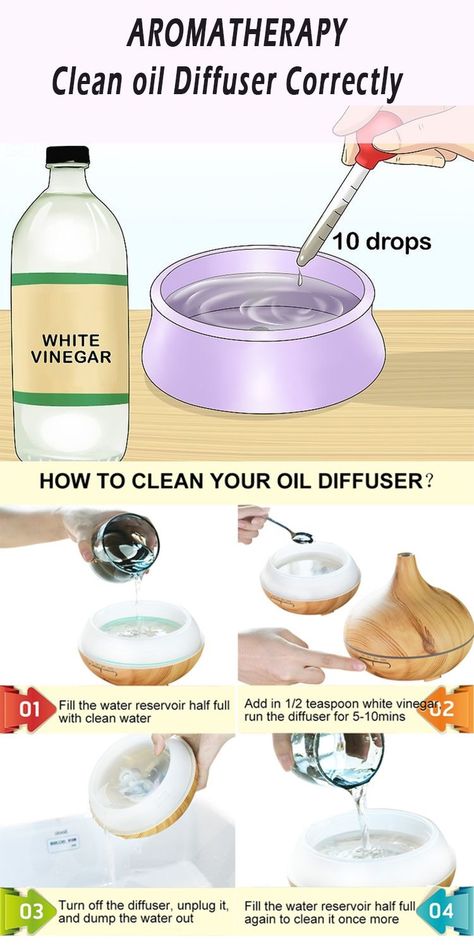
Upholstery
The natural de-odorizing capability of vinegar makes it an ideal choice for soiled or smelly upholstered furniture. This may not be appropriate for very old fabrics or those whose colors are likely to run. After vacuuming the fabric to remove dirt, homeowners can spray a combination of cool water and vinegar onto the stains or affected area. If odor is the only problem, they may allow it to dry and reapply as needed. For stains, they may want to scrub using a soft cloth to lift it.
Large Appliances
Keeping large appliances clean requires attention to the interior and exterior. Although almost any appliance can be cleaned with a vinegar solution on the outside, it may take a special approach to clean the inside, including:
- Dishwasher or Clothes Washer: Run a cup of vinegar on a short cycle to eliminate soap accumulation and limescale
- Oven: Spray vinegar on the interior to cut grease and wipe clean
- Refrigerator: Spray walls, shelves and door to clean and de-odorize
People who have stainless steel appliances may need to use a different cleaner for the surface, to avoid streaks or damage.
Small Appliances
Vinegar can be used to clean the interior of small appliances, depending on the type. For example, people may want to run a 1:1 solution of water and vinegar through their coffee machines once a month. This will help to:
- disinfect in case of mold
- remove hard water accumulations
- get rid of strong odors
Cleaning the interior of the microwave also works better with vinegar. Homeowners can take the same solution and put it into a microwave-safe bowl. Microwaving it on high for about five minutes will loosen food splatters and grease, making them easier to wipe clean.
Cooking Tools/Utensils
Many homeowners hate the way that mixing bowls, food preparation tools, and storage containers take on the color and odors of the food they hold, and vinegar is a viable solution. Soaking the item in a vinegar and water solution is an effective way to remove stains and eliminate odors without damaging it.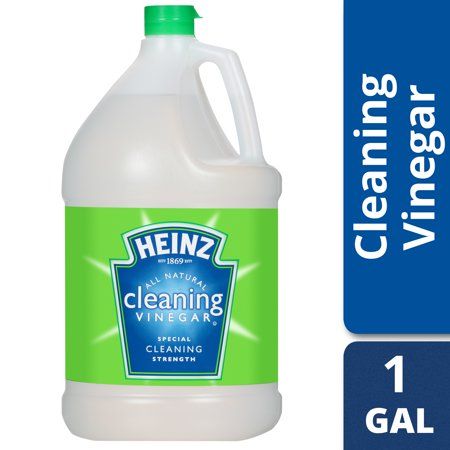 Homeowners should avoid using boiling water when cleaning plastic, as the surface can warp or leach toxic chemicals. The acid in the vinegar can damage knives or the handle, so people may want to use a different cleaning solution for knives and knife blocks.
Homeowners should avoid using boiling water when cleaning plastic, as the surface can warp or leach toxic chemicals. The acid in the vinegar can damage knives or the handle, so people may want to use a different cleaning solution for knives and knife blocks.
Clothing
Heavy detergents can take their toll on even hardy clothing items, but vinegar helps to remove it. Over time, clothing washed repeatedly will start to collect detergent residue. This may make the fabric feel different or fade the color. When homeowners notice this, they can place the clothing items in a bucket or bathtub with vinegar and warm water to soak overnight. This will remove most of the accumulation. To prevent this from becoming a regular problem, people may want to wash their clothes in a washing machine with a cup of vinegar on occasion.
Although vinegar is a safe way to clean virtually any surface, it is not entirely without risk. Acids that are perfect for cleaning can be hard on the hands or face, if people sustain prolonged contact.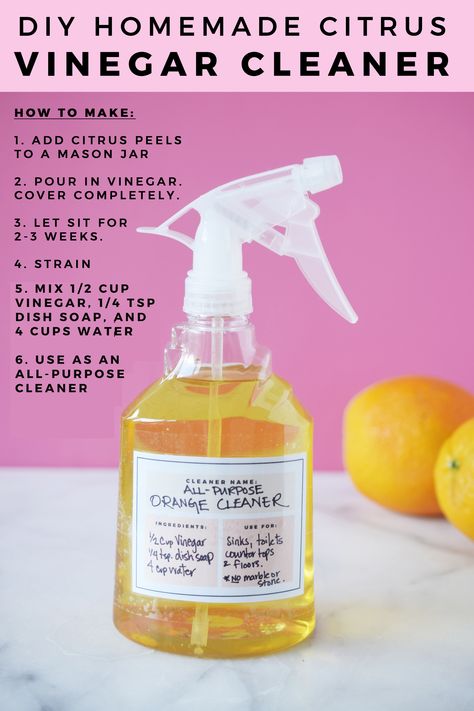 Mixing cleaning solutions, even traditional ones, may prompt a reaction that homeowners are not prepared to manage. Vinegar and water is a great solution for most cleaning needs, but people should avoid mixing it with anything else until they have confirmed it is safe. This will help to ensure a safe and effective result.
Mixing cleaning solutions, even traditional ones, may prompt a reaction that homeowners are not prepared to manage. Vinegar and water is a great solution for most cleaning needs, but people should avoid mixing it with anything else until they have confirmed it is safe. This will help to ensure a safe and effective result.
18 Places You Should Be Cleaning with Vinegar in Your Kitchen
The best all-purpose cleaner is probably in your cupboard right now. News flash: You should be cleaning everything in your kitchen with white vinegar. When diluted with water, it is a "miracle cleaner" that our test kitchen uses for almost everything. Vinegar is made of acetic acid, which is a natural disinfectant for killing some common germs like salmonella and E. coli, but is best when used in tandem with antibacterial soap and water to guarantee all germs are killed.
A huge gallon jug of distilled white vinegar from our favorite brand, Heinz, will run you $13 on Amazon, and the vinegar smell will evaporate more quickly than you think. But if you're worried about it, you can always add some citrus peels or essential oils. Most applications call for a 1:1 ratio of water to vinegar so the strength of the acid isn't too intense or damaging, and it can be stored in a jar or a spray bottle for easy access. Here's how we use white vinegar to clean 18 things in our kitchens.
But if you're worried about it, you can always add some citrus peels or essential oils. Most applications call for a 1:1 ratio of water to vinegar so the strength of the acid isn't too intense or damaging, and it can be stored in a jar or a spray bottle for easy access. Here's how we use white vinegar to clean 18 things in our kitchens.
1. Kitchen Sink
Use a 1:1 ratio of diluted vinegar and water and store it in a spray bottle. Then you can spritz and disinfect your kitchen sink, counters, or any other spots that you'd normally use bleach but want to be food-safe. To counteract the vinegar smell, you can use soapy water to rinse the sink afterward.
2. Floors
Don't use expensive cleaners—mix 1:1 vinegar to water and mop the floor with it! This will protect your floor from too strong a concentration of acidic vinegar, and will help lift off any grease or dirt.
3. Greasy Stovetop
Vinegar's acidity helps cut through grease easily. Spray some vinegar and water mix onto a splattered stovetop, let it sit for 10 minutes, and then scrub down with soapy water.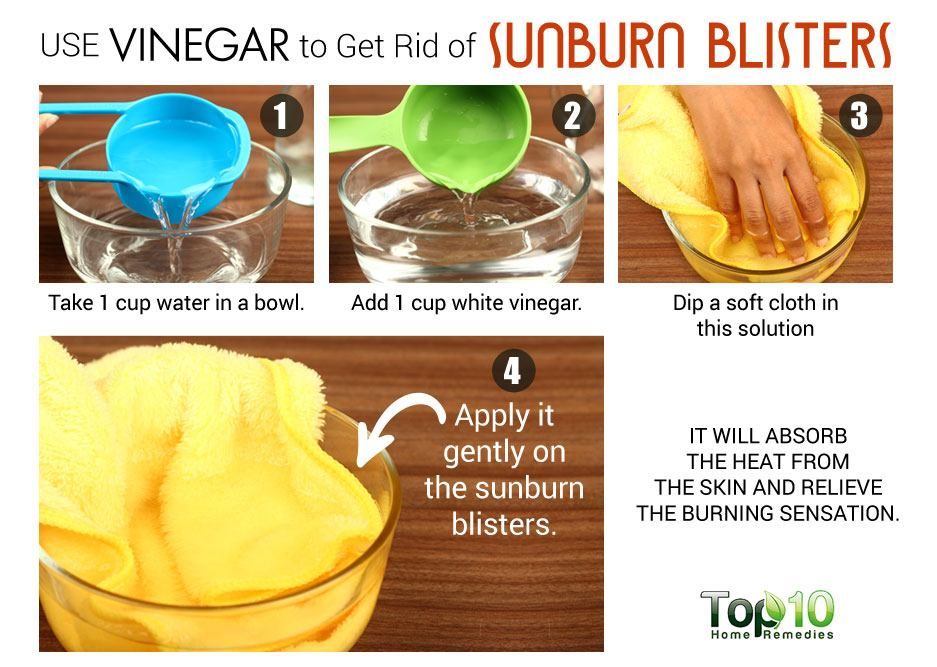 It should wipe right off. If not, leave it to sit a bit longer.
It should wipe right off. If not, leave it to sit a bit longer.
4. Sheet Pans
Clean your dirty sheet pans by mixing ½ cup baking soda and ½ cup white vinegar with hot water in the sink. It will bubble up like a school science project, but that reaction is what helps loosen the residue. Make sure your sink is plugged so they stay submerged, and let it soak for 30 minutes to an hour before scrubbing away with a scouring pad, the scrubby side of your sponge, or steel wool.
5. Stainless Steel Pots and Pans
If you have a particularly gnarly-looking stainless steel pan that won't get clean, boil together water and vinegar for a few minutes. It will dissolve grease and get rid of any weird stains or water spots. If it's really dirty, you can go longer. The more vinegar you use here, the more quickly the cleaning happens. Then dump the vinegar mixture and wash as normal with soap and water!
6. Enamel Pots and Pans
The same works for enamel or enamed cast iron (like your Dutch oven): boil water and vinegar together to help dissolve stains, and scrub off any remaining spots with soap and water.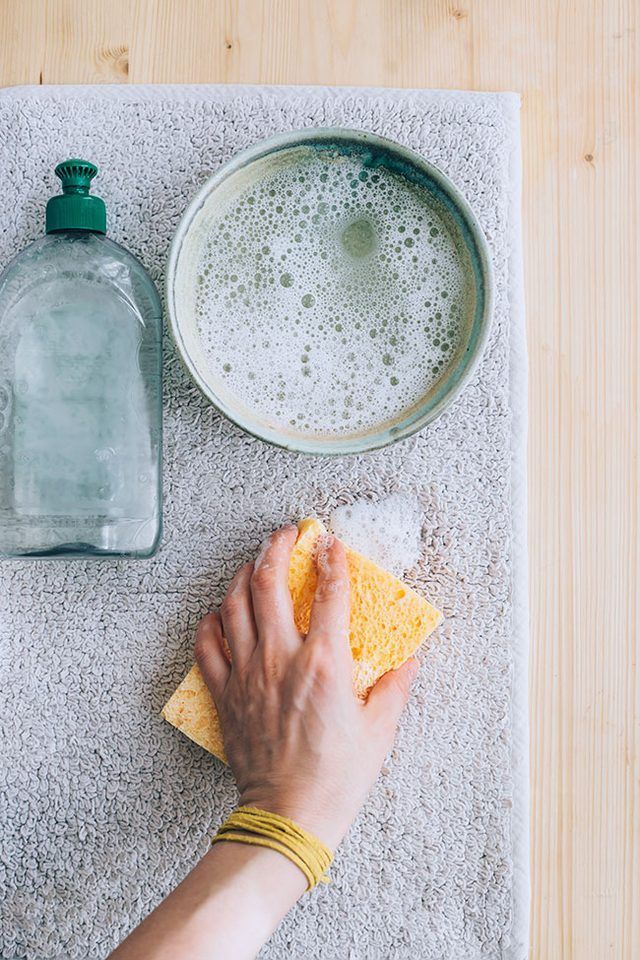
7. Microwave
We tried using a vinegar and water mixture in Angry Mama, a funny-looking microwave cleaner, but you could get the same results by combining equal parts water and vinegar in a large microwave-safe bowl. Microwave it for about five minutes to loosen any gunk with the steam, then wipe clean. Make sure to put a chopstick or toothpick inside the bowl—if not, the water can superheat and make the bowl explode! (Something proven by the Mythbusters.)
8. Coffee Makers and Tea Kettles
Whether you use an electric tea kettle, standard coffee maker, or Keurig, they can all be cleaned in the same way to get rid of mineral build-up. (This process is also known as descaling.) Pour a 1:1 ratio of water to vinegar into the water reservoir or directly into the kettle. Run it through the coffee maker or simply boil the water in the kettle, then rinse thoroughly with water. For automatic coffee makers (including those that use pods), you may have to run plain water through a few times to get the smell and taste of vinegar out.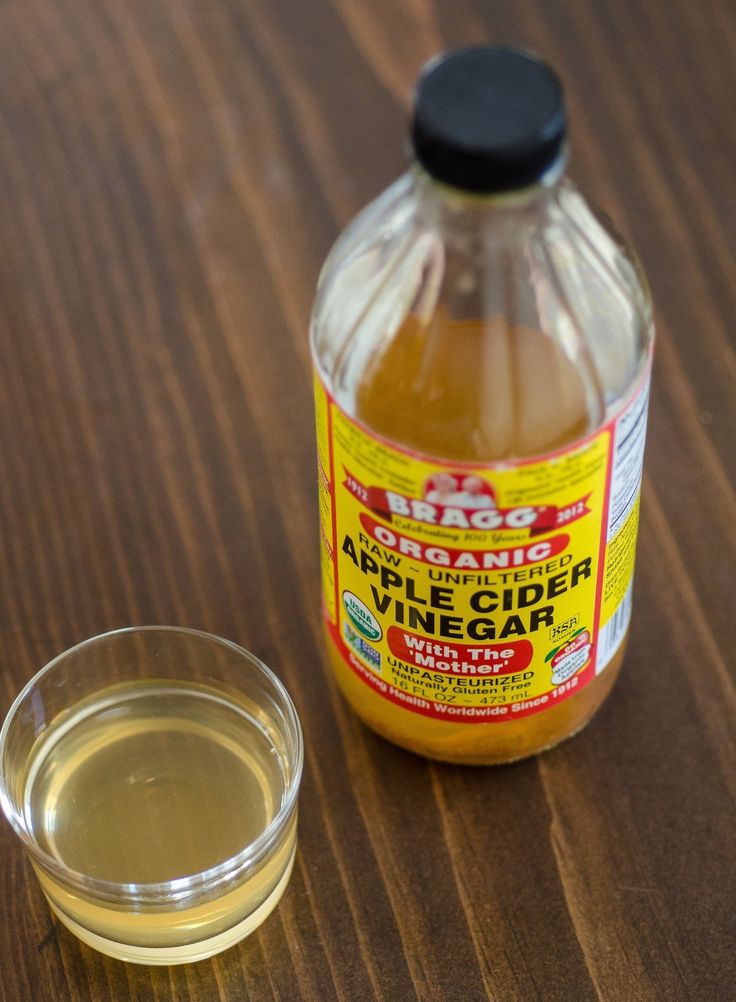 You can also use vinegar and water to clean stained tea or coffee cups.
You can also use vinegar and water to clean stained tea or coffee cups.
9. Blender or Food Processor
Stuck on food, stains, or weird smells? Again, 1:1 water to vinegar and blitz it in the blender or food processor, then wash as normal.
10. Instant Pot (or Pressure Cooker) Sealing Ring
If your Instant Pot sealing ring smells or is stained, soak it in with a mixture of vinegar and water in your sink, a sheet pan, or any other vessel in your kitchen. Let it soak for as long as you want (an hour is great if you can spare the time), wash it with dish soap, and leave it out to dry and air out. You can also fill the whole pot with white vinegar, water, and lemon rind, then run the steam cycle for a few minutes.
11. Cloudy Wine Glasses
If minerals in hard water are causing your wine or drinking glasses to get cloudy, soak them in the sink with some non-diluted vinegar for a few minutes and wash as normal. The vinegar should dissolve the minerals.
12.
 Plastic Cutting Board
Plastic Cutting BoardAfter cutting raw meat, it's good to not only wash your cutting board, but also disinfect it with a mixture of water and vinegar. Wipe it down thoroughly with a mixture of vinegar and water—this is a great time to store the 1:1 mixture in a spray bottle for easy cleaning. It's always best to use plastic cutting boards with meat, but if you use wood, make sure to follow these wooden cutting board cleaning rules.
Is it possible to cure diseases with vinegar? Here are the science facts
- Gabriel Neal
- Conversation article
Image copyright, Getty Images
Apple cider vinegar's health benefits have been known for a long time, but are scientific studies backing them up? It decided to find out a professor of family medicine from Texas, Gabriel Neal. nine0018
When my brother and I were kids in the 1980s, we loved going to Long John Silver's (an American fish fast food chain).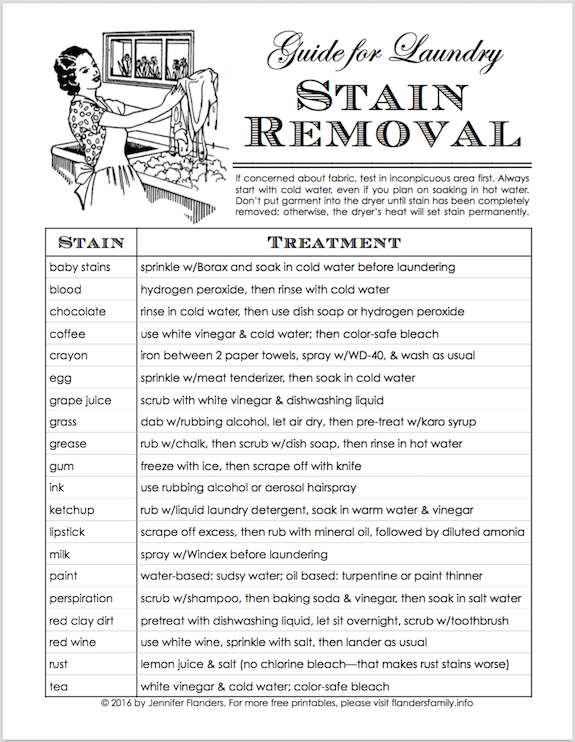
But it was not the fish dishes that lured us there, but the bottles of malt vinegar that stood on the tables.
We unscrewed the cap and sipped a spicy divine nectar with a caramel touch right from the bottle.
Are you disgusted? Perhaps. Are my brother and I ahead of our time? Obviously so.
Now vinegar is advertised as a panacea for any ailment in social networks, and a simple Internet search will give you a huge number of links to articles about this miraculous seasoning. nine0011
Friends and colleagues vying with each other to tell stories about healing with apple cider vinegar. "Mowed the grass on the front lawn and now you can't straighten up? Vinegar is your best friend. Can't you lose those extra five kilos? Vinegar will just dissolve them. What, syphilis? Well, you know what to do - vinegar."
As a medical practitioner and teacher of medicine, I am constantly asked about the health benefits of apple cider vinegar.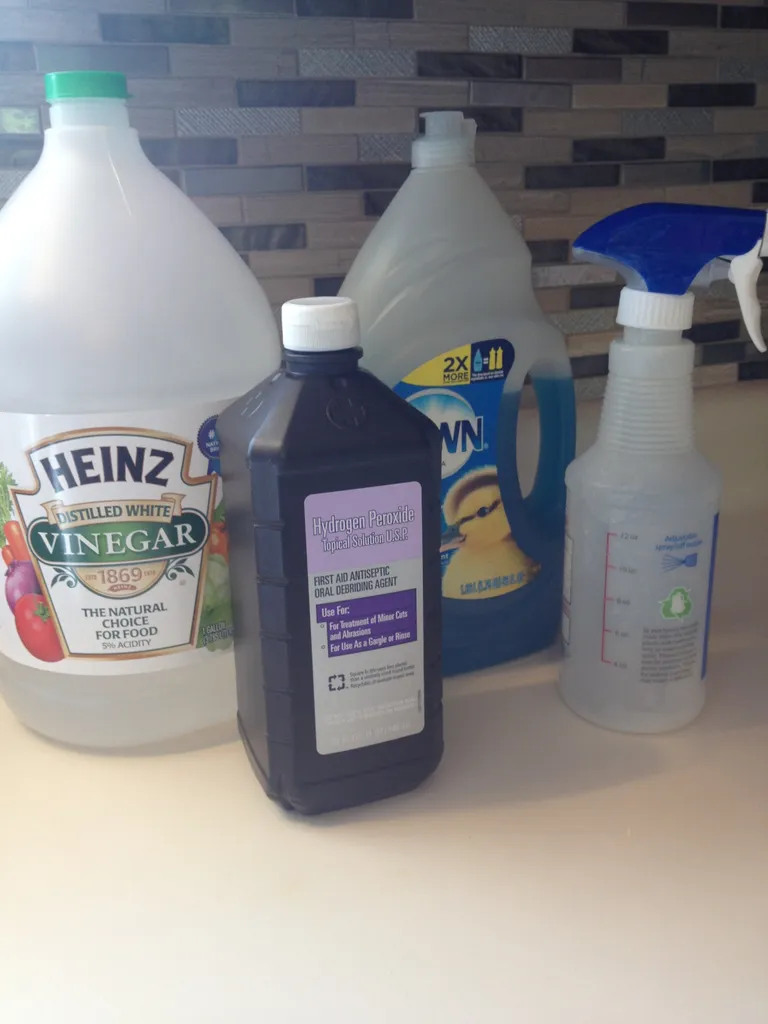 I love questions like this because you can talk in detail about the history of vinegar, and then get to the heart of the matter: how exactly vinegar can be useful. nine0011
I love questions like this because you can talk in detail about the history of vinegar, and then get to the heart of the matter: how exactly vinegar can be useful. nine0011
- Medical myths: you can't eat ice cream when you have a cold?
- Medical myths: is alcohol compatible with antibiotics?
- Medical myths. Does milk improve digestion?
- Medical myths. Chewing gum is not digested?
Throughout history, many diseases have been treated with vinegar. Hippocrates, for example, advised taking it for coughs and colds, and the Italian physician Tommaso del Garbo, during an outbreak of plague in 1348, washed his hands, face, and mouth with vinegar to prevent infection. nine0011
Vinegar and water were considered excellent thirst quenchers by ancient Roman legionnaires, and modern athletes take their cue from them.
In general, history provides a lot of evidence of the beneficial effects of vinegar on the human body.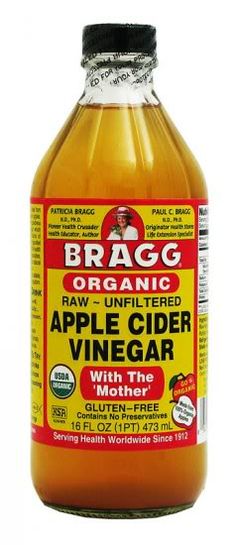 But does modern medical research support this?
But does modern medical research support this?
Image copyright, Getty Images
Image caption,So how scientific is it to think apple cider vinegar is a panacea for so many ailments?
Skip the Podcast and continue reading. nine0011
Podcast
What was that?
We quickly, simply and clearly explain what happened, why it's important and what's next.
episodes
End of Story Podcast
The strongest evidence for the health benefits of apple cider vinegar comes from several studies. One study showed that drinking apple cider vinegar improved post-meal blood glucose levels in people with insulin resistance.
In 11 diabetic study participants, taking one tablespoon of apple cider vinegar lowered blood sugar levels 30-60 minutes after eating more effectively than the placebo group.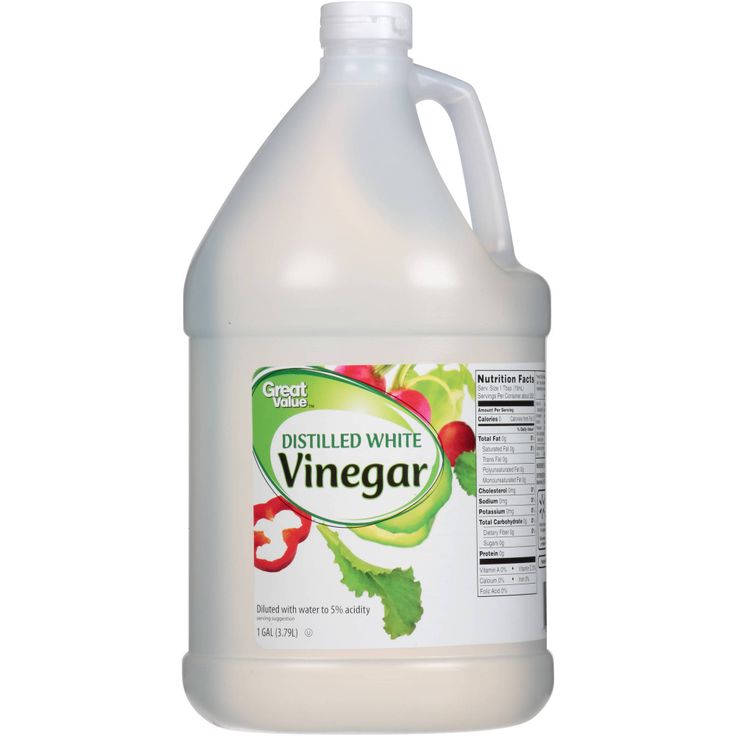
Well, not bad, but we are talking about only 11 individuals prone to diabetes.
Another study in obese Japanese adults showed a marked decrease in their weight, fat and triglyceride levels in the blood after taking this same vinegar.
Scientists divided the participants of the experiment into three groups of 155 people. One group took 15 ml (about a tablespoon) of apple cider vinegar daily, the second received 30 ml, and the third received a placebo.
The researchers then measured weight, fat mass, and triglyceride levels. In both groups, who took 15 and 30 ml of vinegar, all three indicators decreased.
What can I say? While these findings need to be confirmed by larger studies, they are encouraging.
Animal studies, especially rats, show that vinegar can reduce blood pressure and abdominal fat. nine0011
Image copyright Getty Images
Image caption Vinegar? It works great for fish and chips.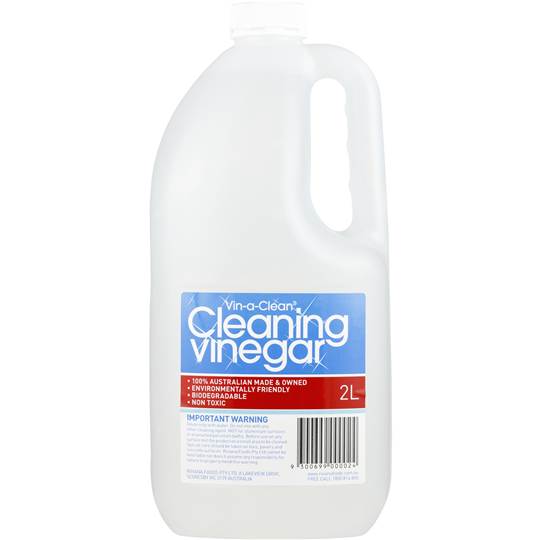
These experiments encourage similar studies in humans, as conclusions based on animal studies alone are not conclusive.
So, the real health benefits of vinegar have yet to be tested in large-scale studies. And such studies are likely to appear soon.
Now let's try to go the other way: is there any evidence that vinegar can harm human health? nine0011
Not really. Unless you drink it in large quantities or too concentrated - for example, distilled white vinegar used for cleaning (the content of acetic acid in vinegar allowed for consumption is 4-8%).
And, of course, you should not rub it into your eyes (why?!) or heat it in a lead vat, as the Romans did, to make the vinegar sweet. This is indeed very dangerous to health.
And by the way, never heat up food in a lead vat, it's harmful. nine0011
Apple cider vinegar is perfect for fish and French fries. At the same time, he will not heal you from all ailments, but gastronomic pleasure is guaranteed.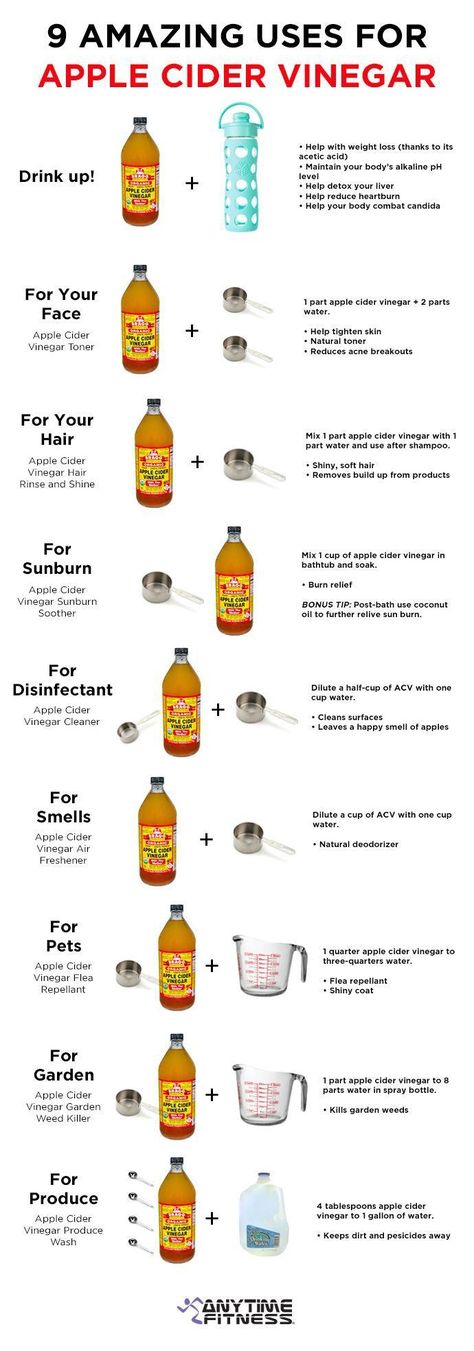
And if you stumble upon a bottle of malt vinegar somewhere, remember me and my brother and take a sip from it - good luck!
---
Legal information. This article is for general information only and should not be taken as a substitute for the advice of a physician or other healthcare professional. The BBC is not responsible for any diagnosis made by a reader based on material on the site. The BBC is not responsible for the content of other sites linked to this page and does not endorse commercial products or services listed on those sites. If you are concerned about your health, see your doctor. nine0108
This article was originally published on Conversation and is reprinted here under a Creative Commons license. You can read the original in English at BBC Future .
benefits and harms for the body of men, women, children
This acidic product, which will be discussed in the article, is formed during the fermentation of apple juice. At the first stage, cider is obtained - apple wine, and at the second stage, acetic bacteria interact with oxygen and oxidize the drink, forming vinegar. nine0011
At the first stage, cider is obtained - apple wine, and at the second stage, acetic bacteria interact with oxygen and oxidize the drink, forming vinegar. nine0011
Apple cider vinegar is loved not only for its pleasant smell, but also for its unique health benefits. But is this product really as useful as it is usually praised, and can apple cider vinegar harm the body? We will try to answer these and other questions.
The history of apple cider vinegar
It first appeared by accident: air got into a bottle of wine, people noticed that the product had changed, and eventually figured out how to use it. Due to hygiene issues and the lack of boiled fresh water, vinegar began to be used as a disinfectant and cleanser. Practical: the smell of vinegar quickly disappeared, and the skin was cleansed. Damage, abrasions and wounds were rubbed with apple cider vinegar to prevent infection. nine0011
Vinegar contains enzymes and acids: acetic, malic, lactic and citric. They also benefit the body in small quantities. For example, lactic acid is needed for the normal functioning of the brain and nervous system, for regulating metabolic processes, it is widely used in cosmetology, and citric acid helps to speed up metabolism and cleanse the body.
Benefits of apple cider vinegar for men
Men who do not limit themselves in their diet, often indulging in fatty and fried foods, are at risk of cardiovascular disease. One of the factors in the development of such problems is cholesterol. According to some reports, in the group of men older than 30-35 years, the average cholesterol level is higher than the upper limit of the norm (1). This is where apple cider vinegar can help. There is evidence that adding a small amount of this product to the diet helps to reduce the level of "bad" LDL cholesterol and triglycerides, and also increases the level of "good" HDL cholesterol (2). nine0011
nine0011
Men who suffer from excessive sweating or are embarrassed by bad breath can also benefit from apple cider vinegar, thanks to its bactericidal properties. In its pure form, of course, you should not use acid. To prepare a homemade “deodorant”, you need to dilute vinegar with water, wet a napkin and wipe those parts of the body that sweat especially actively: armpits, feet. The only inconvenience is a pungent smell, but it quickly disappears.
In addition, vinegar can help fight dandruff (3). To do this, apple cider vinegar is diluted in water and applied to the scalp, the pH changes, which creates uncomfortable conditions for yeast fungi, which often provoke dandruff. nine0011
Benefits of apple cider vinegar for women
Women who dream of a slim figure are probably already familiar with this product. Many people looking to lose weight use vinegar as a food additive. Is it justified? There was a study in which participants who took apple cider vinegar lost more excess weight over a certain period than a group that did without this product.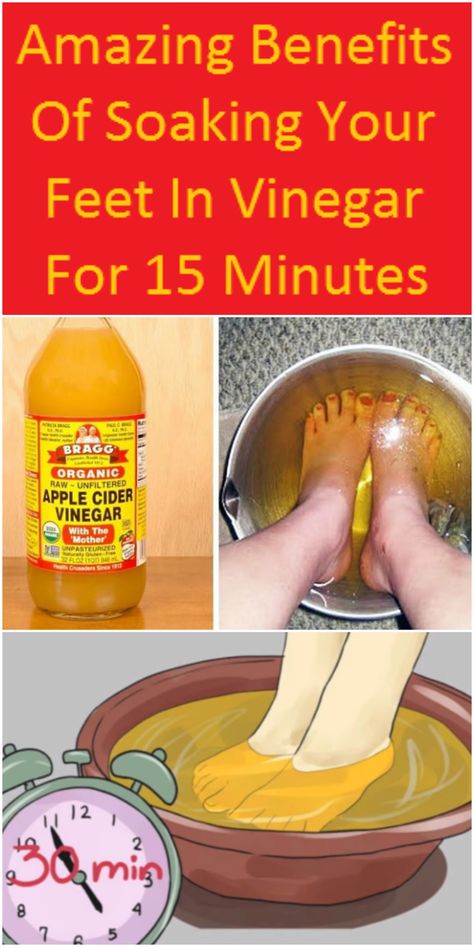 In addition, they had more significant changes in the waist area (3). nine0011
In addition, they had more significant changes in the waist area (3). nine0011
Apple cider vinegar is also used in home hair care: a water-vinegar solution will help freshen up the color of your hair - it's handy when you don't have time for a hairdresser. Some people use this product for problematic skin, hoping that the acid will dry out acne and make them less noticeable. However, there are no scientific studies that would prove the effectiveness and safety of this approach. Therefore, at a minimum, you should consult a dermatologist before trying. nine0011
Benefits of apple cider vinegar for children
Given the characteristics of a child's body, do not experiment with vinegar without first talking to a doctor - especially if it involves ingestion. However, this product can come to the rescue, for example, in the summer.
Some people add apple cider vinegar to cold water to soothe the pain of burns after too much sun exposure. Whether the pain really goes away or the placebo effect works is not known for certain, there is no significant evidence.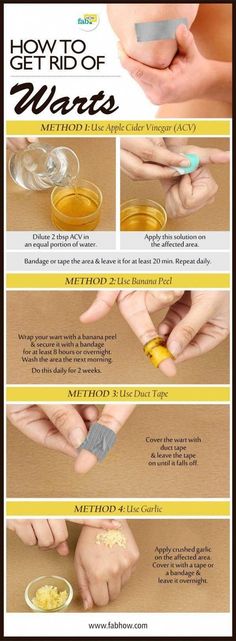 But a weak solution will not hurt in order to prevent infection of delicate skin damaged by sunlight. nine0011
But a weak solution will not hurt in order to prevent infection of delicate skin damaged by sunlight. nine0011
Apple cider vinegar is harmful
Vinegar is an acid, so it can only be used internally or externally in diluted form. The concentration of “store” vinegar is especially high (up to 9%), homemade vinegar does not act so aggressively on the mucous membranes, and it needs less dilution.
Despite the benefits of the product, it can also be harmful. For example, excessive consumption of vinegar can damage the digestive system and damage tooth enamel. The irrational use of vinegar for gargling in various diseases can cause irritation and even burns of the mucous membranes. nine0011
- It is necessary to completely exclude vinegar in case of peptic ulcer, gastritis, colitis of the stomach and intestines, since the damaged mucosa is prone to inflammation. It is also necessary to minimize the use of vinegar in food for hepatitis, nephritis and cirrhosis of the liver.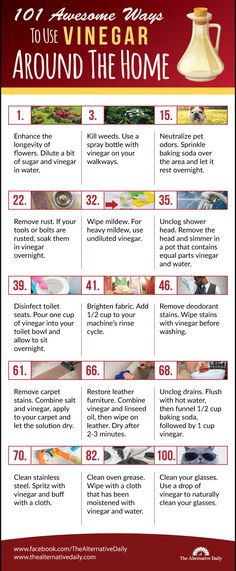 Do not give to children under three years of age, - warned Alexander Voynov, a nutrition and wellness consultant at the WeGym fitness club chain.
Do not give to children under three years of age, - warned Alexander Voynov, a nutrition and wellness consultant at the WeGym fitness club chain.
Medicinal uses of apple cider vinegar
Since ancient times, vinegar has been used to cleanse and disinfect, to reduce inflammation. Natural acid helps cleanse the skin, so it is used in the creation of cosmetics: peels, lotions. But you can use them only after consulting a dermatologist, since vinegar can cause the opposite effect on irritated skin. Remember: vinegar is always used diluted. nine0011
Apple cider vinegar may help with varicose veins (3). No, it does not cure the disease and does not replace what the doctor prescribed, but it is able to make swollen veins a little less noticeable, and therefore it is ideal as an aid.
To soften the rough skin of the feet, water baths are made, in which vinegar and salt are added.
Rinse hair with apple cider vinegar solutions. The acid neutralizes the harmful effects of alkalis from detergents and helps to restore the natural pH of the skin, making hair soft and shiny. For example, you can add a spoonful of vinegar to warm water and rinse your hair with this home remedy after washing. nine0011
For example, you can add a spoonful of vinegar to warm water and rinse your hair with this home remedy after washing. nine0011
If you have low stomach acid, adding vinegar to your meals can help with digestion.
The use of apple cider vinegar in cooking
Apple cider vinegar is actively used as a marinade, seasoning. It softens the fibers of the meat and makes it more tender, and the taste of the dishes is brighter.
Homemade apple cider vinegar
Unrefined apple cider vinegar is the most useful, which, unfortunately, is not available for sale. Pasteurization and filtration destroy beneficial substances and reduce the benefits of vinegar. Unrefined vinegar is always slightly cloudy, with possible sediment and foam on the surface, which are the result of the activity of vinegar bacteria and are not dangerous. If desired, apple cider vinegar is easy to make at home
Share your recipe
Send your signature dish recipe to retsepty@kp.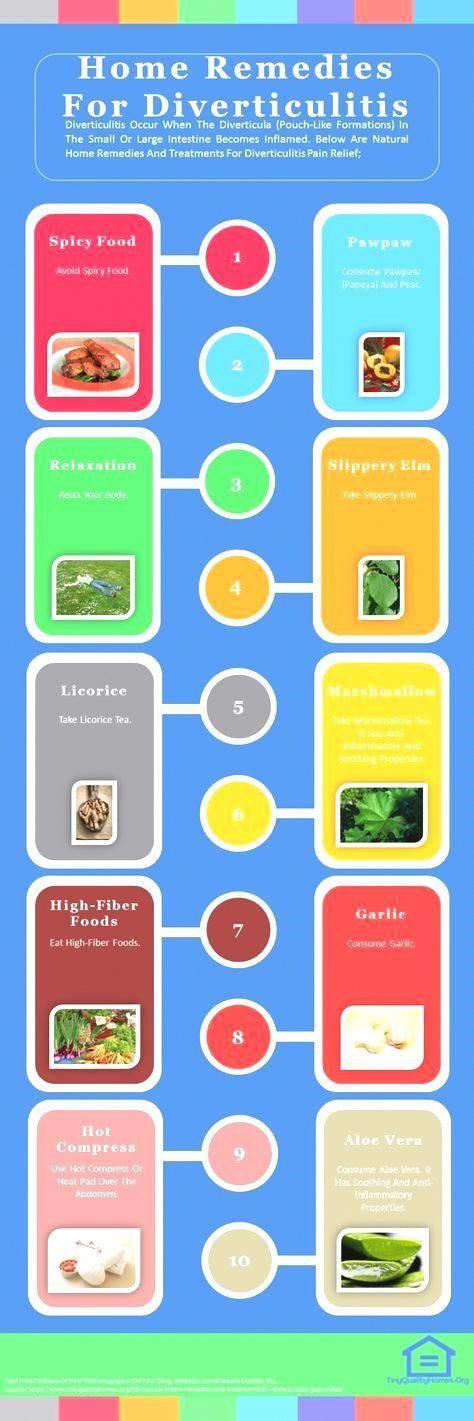 ru . "Komsomolskaya Pravda" will publish the most interesting and unusual ideas
ru . "Komsomolskaya Pravda" will publish the most interesting and unusual ideas
How to choose and store apple cider vinegar
Often under the label "apple cider vinegar" is sold ordinary table vinegar with the addition of flavoring or extract. It is worth paying attention to the composition and price: a natural apple product is several times more expensive than “classic” table vinegar. Also, its acidity is usually not higher than 4 - 6%. nine0011
Apple cider vinegar is yellow in color, slightly cloudy, and sedimentation at the bottom is also possible. Give preference to the product in a glass bottle.
Vinegar is stored in a cool dark place, storage in the refrigerator is not allowed. Shelf life ranges from two months to two years, which is indicated on the package.
Frequently Asked Questions
Apple cider vinegar can be dangerous if used incorrectly. To avoid trouble, we recommend that you read the answers to the most popular questions from readers.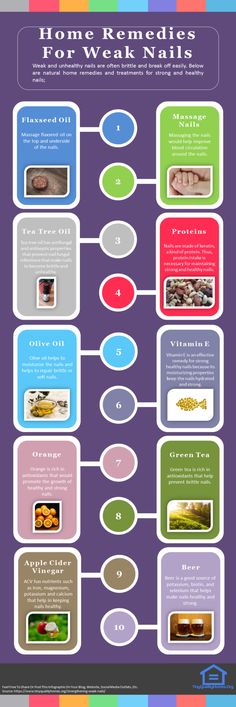 nine0011
nine0011
How to drink apple cider vinegar?
In its pure form, this product, once inside the body, will cause serious burns and other consequences dangerous to health and life. Therefore, you can take apple cider vinegar inside only by diluting it in water. Usual proportions: 1 tablespoon of vinegar to 1 glass of water. However, you should definitely consult with your doctor first, informing the specialist about your chronic diseases and other health conditions.
How to make an apple cider vinegar foot bath? nine0169
This is another option for cosmetic use. Water procedures with the use of vinegar disinfect the skin, make it softer. To prepare a foot bath, you need to pour 3 tablespoons of apple cider vinegar into a container of water. However, if there is irritation or damage to the skin, as well as any diseases and features, first consult your doctor.
Can apple cider vinegar be substituted for table cider vinegar?
Theoretically, yes. But table vinegar does not have a slight apple smell, which means it can deprive homemade preparations (if we are talking about them) of a certain taste and aroma.